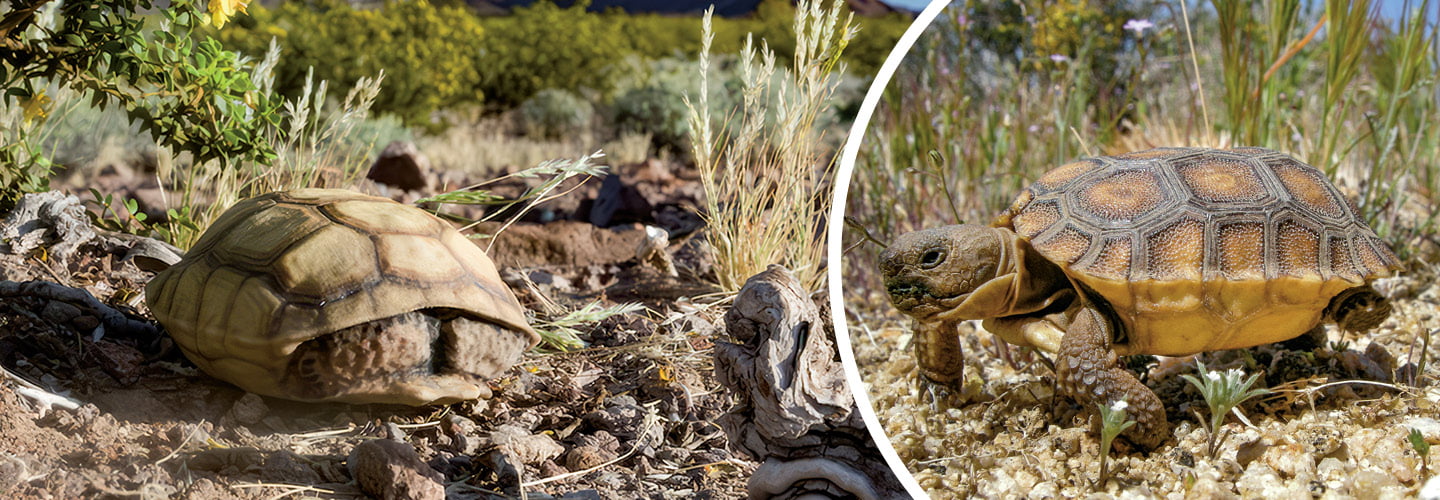Shutterstock.com
The tortoise population in California’s Mojave Desert has plummeted by more than 90 percent over the past 40 years, in part because ravens—which are thriving in the area—often peck open the soft shells of juveniles. But scientists have found a creative way to help. Biologist Tim Shields and his team invented decoy shells that spray ravens with an irritating concoction that they hope will teach the birds to stay away. The decoys needed to be convincing enough to trick ravens into believing they were real, so the team used a 3-D printer to build the complex shapes out of plastic. Then they added sensors and machinery so that when attacked, these “techno-torts” release an explosive spray of methyl anthranilate, a nontoxic fluid that smells and tastes like artificial grape. While it doesn’t harm the birds, they find it highly annoying. So far, the results are promising. “We don’t know what the ravens are thinking,” says Shields. “But our videos show very surprised animals who will probably think twice the next time around.”

